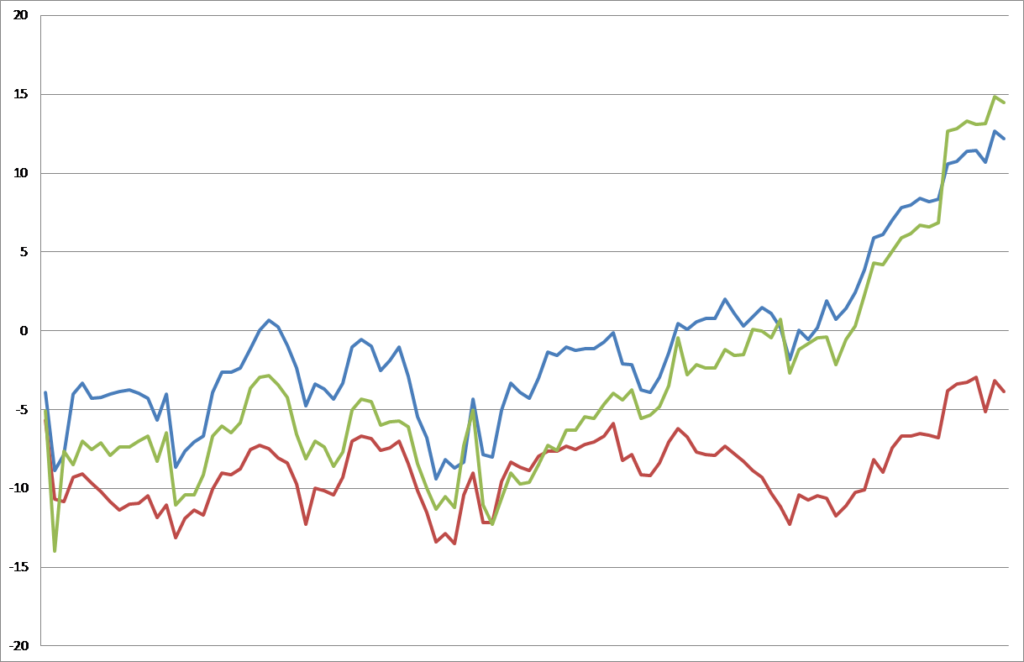
In March 2020, when the COVID-19 pandemic led to lockdowns around the world, the stock market crashed in a matter of a few day.
Due to very decisive and concerted actions of central banks and governments around the globe, that huge blow had been cushioned and stock markets recovered very strongly in a matter of months.
One year after the global pandemic, our portfolio stands at all time high
Early in 2020, before the COVID-19 pandemic had shown its full disastrous impact (on humanity, health systems, societies, economies etc.) our dividend stock portfolio had a market value of well above USD 300’000.
Well, in March that investment portfolio crashed within a few days to USD 210’000.
But the COVID-19 pandemic blow was much more severe and accompanied by a huge amount of fear and uncertainties all around the world.
That 30 % drop of our investment portfolio was more severe compared to any index I could think of.
This took me by surprise, given the fact that at the core of our investment portfolio stand strong businesses in the consumer staple sector and big names such as Coca Cola, Heineken, The Walt Disney Company and so on.
Now in the meantime, since March 2020, a lot has happened. The world we live in has completely changed.
So did also our investment approach. I started a Tech Portfolio in 2020 and for months have been consequently buying stocks names like Facebook, Alphabet, Amazon, Microsoft, Apple etc.
We also added to our Dividend Portfolio, mainly insurance companies such as Allianz, Admiral, Swiss Life etc., taking advantage of lower stock prices in 2020.
Today, our total stock investments (Dividend – plus Tech Portfolio) are moving towards USD 500’000, mostly driven by strong performance.
Our overall stock investments are now by far more diversified.
In contrast: before the COVID-19 pandemic, we had ZERO Tech Stocks.
Today, our asset distribution is broader and more resilient. And even though many of our tech investments don’t pay any dividends (yet), we can be confident to receive at least USD 15’000 in net dividends trough 2021.
Now let’s pick some of our stock holdings (we have over 100 positions) and let’s see how they have moved since the March 2020 COVID-19 Pandemic Low.
A snapshot at some of our holding positons
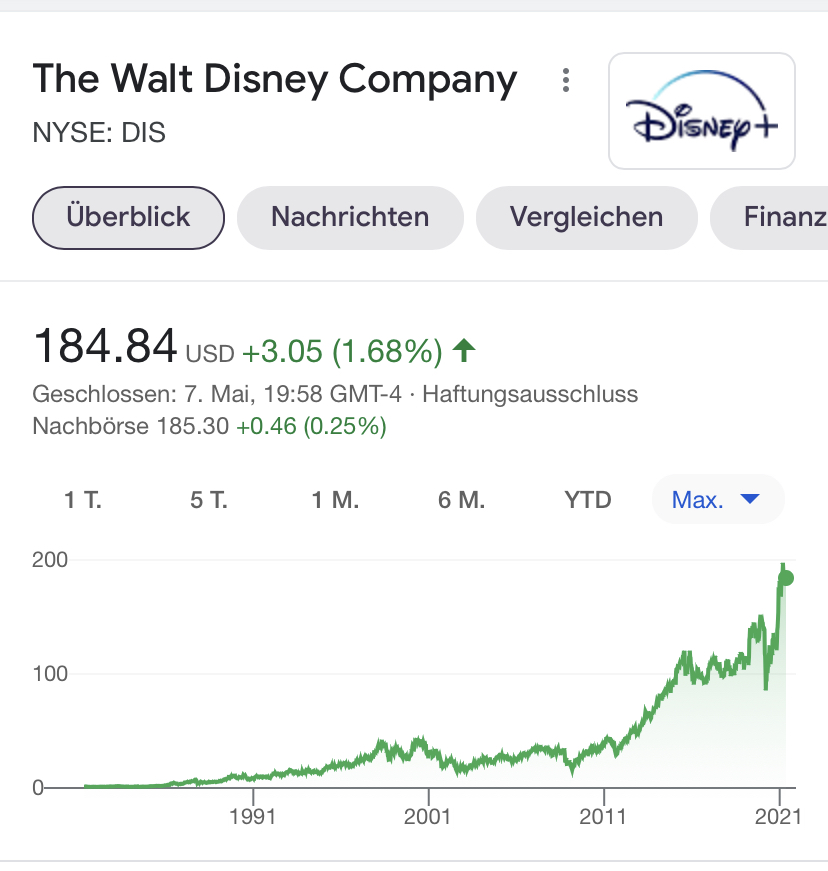
Who would have thought that The Walt Disney grew stronger and more compelling despite COVID-19 lockdowns. The Walt Disney Company clearly is a pandemic winner!
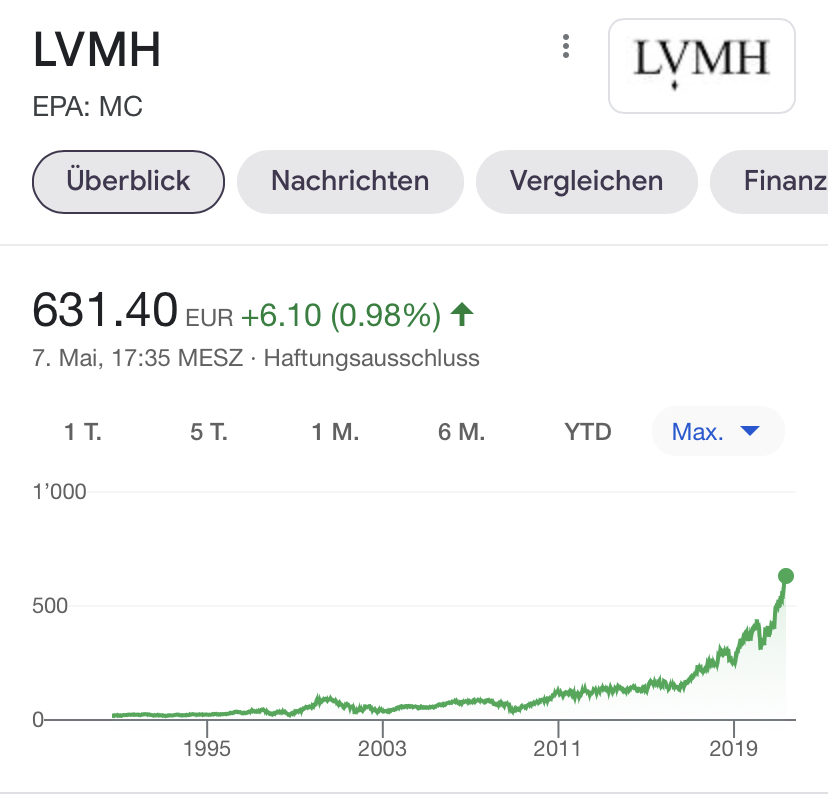
Few people know that Louis Vuitton Moet Hennessey – commonly known as LVMH – is the largest company in Europe by market value. This French conglomerate is the world largest luxury goods company. Just look at the amazing brand portfolio (wines, spirits, leather goods, perfumes, cosmetics etc.) and the business fundamentals and you can immediately see that we are talking here about a wonderful business.
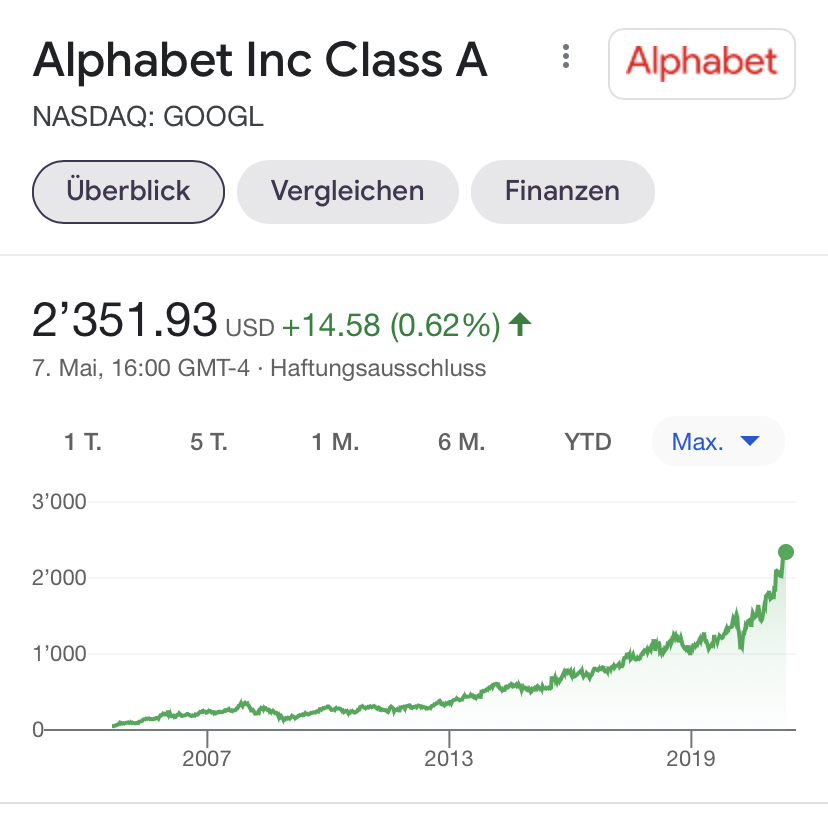
Acquiring stocks of Alphabet at around USD 1’200 in 2020 was certainly a good move. Alphabet’s stock has gone up pretty smoothly for years and I see huge potential for further growth.
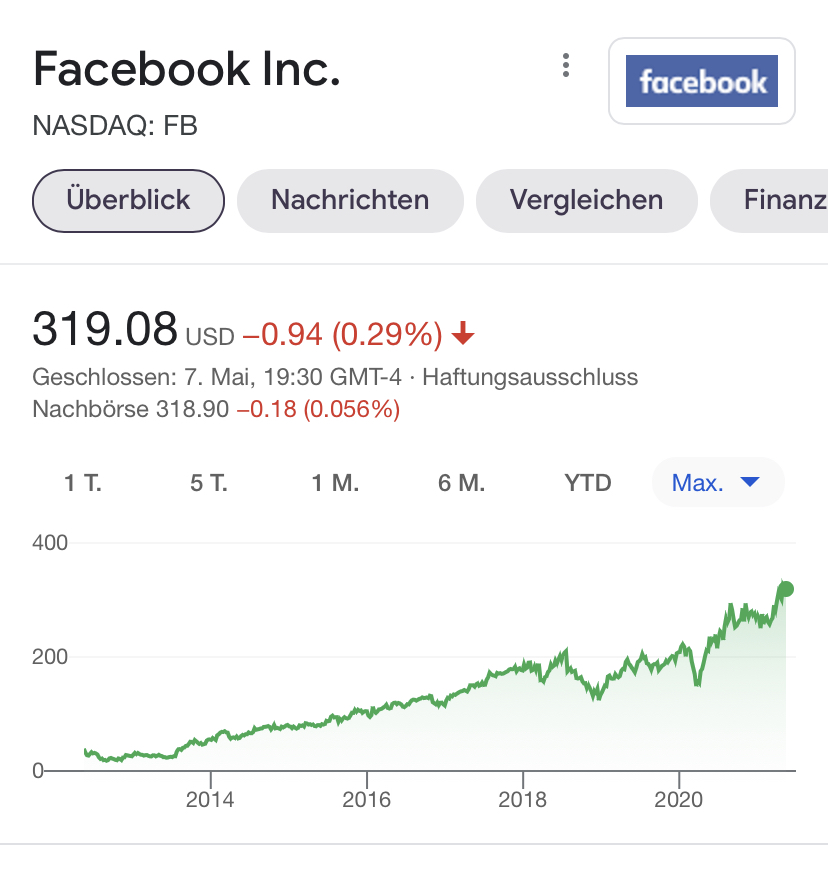
Since I initiated a position in Facebook in 2020, that stock went up like a rocket and our Facebook position has become our largest Tech Holding. Facebook is a hugely attractive blue chip stallwart.
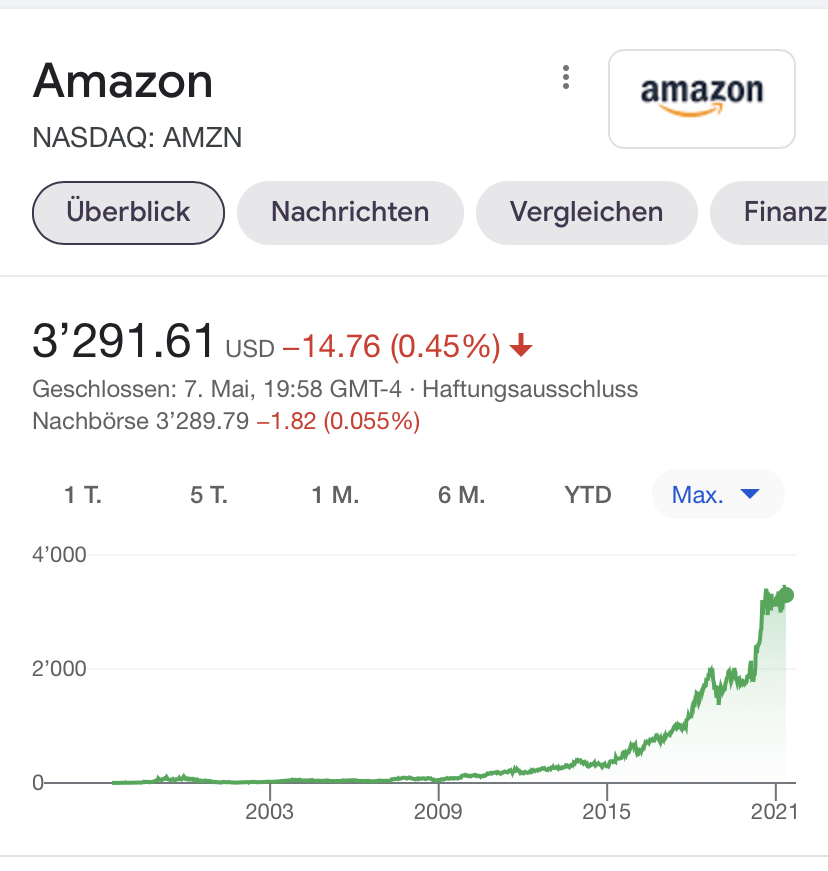
Amazon is THE most robust and one of the most dynamic tech companies that ever existed. Its economic moat is so massive. I bought one stock in 2020 for around USD 2’200, thinking it was expensive. Well, little did I know about the earning potential of that wonderful company.
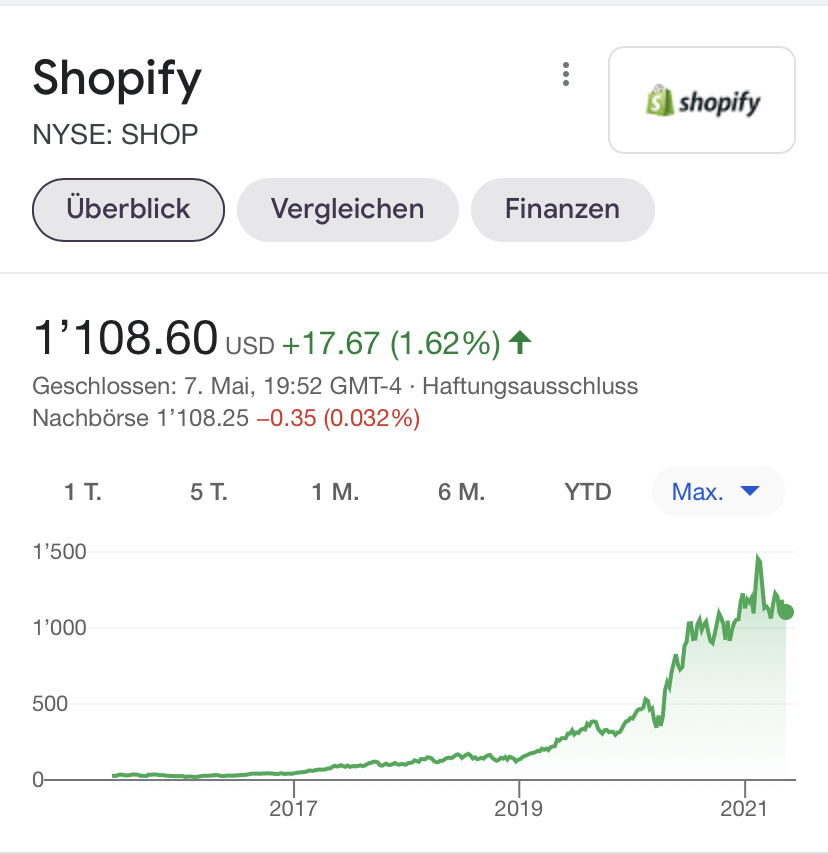
Shopify has been one of my various tech acquisitions in 2020 and I feel very confident about its bright growth prospects. Shopify helps small and medium size businesses around the world to compete with Amazon respectively not to be put out of business by that giant. Shopify has a very capital light business model that is extremely scalable. Shopify has turned into profit at the beginning of 2021 and will reward their shareholders handsomeley for the years to come.
Now, with these few examples from our Tech Portfolio, let’s pick some of our “older” Dividend Positions. How did they fare since the March 2020 Coronoa-Crash?
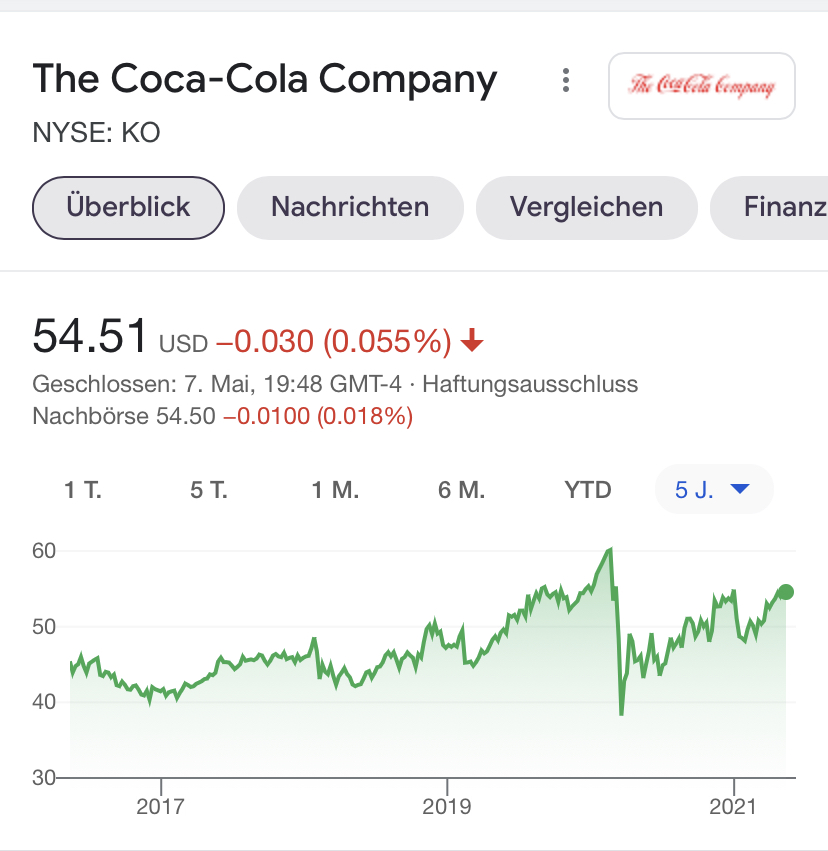
The Coca Cola is one of the very few indisputed high quality Dividend Kings with an extremely powerful and resilient business model. But yet, Coca Cola saw it’s stock price crash from USD 60 to well below USD 40 in a matter of less than a week. As the stock chart shows, the business is recovering. Due to global lockdowns, many restaurants, parks etc. all around the world had to be closed, but once the measures are relaxed, Coca Cola will return to growth again.
Now, let’s look at Coca Cola’s main competitor, PepsiCo, which has been for some time in our dividend portfolio as well.
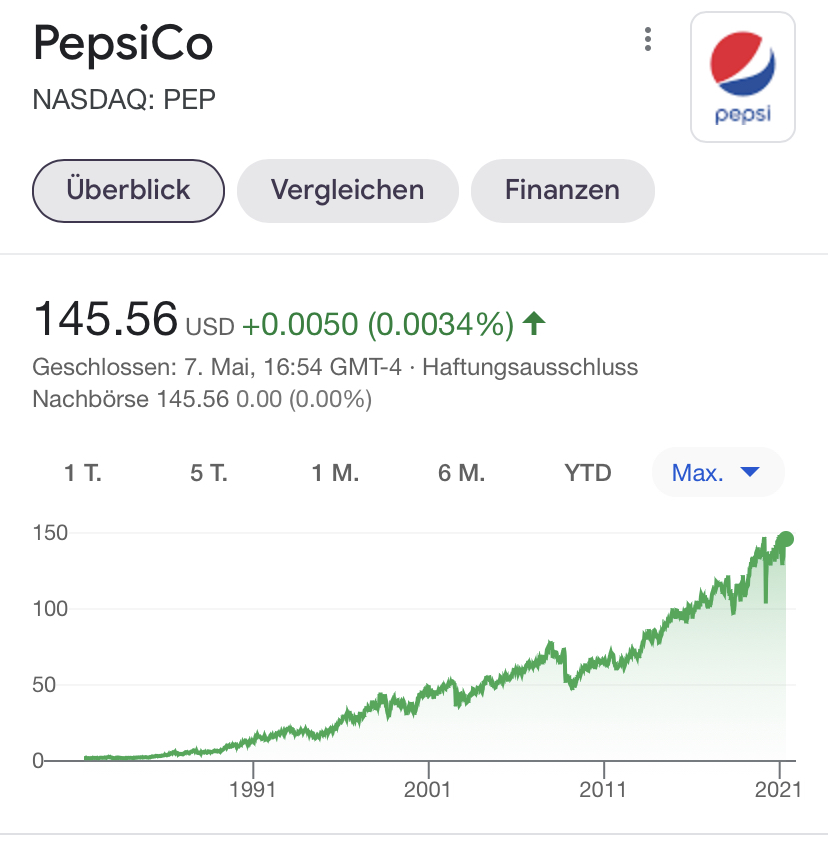
PepsiCo took a hit, of course, but that was less severely than in the case of Coca Cola.
Why is that?
Well, PepsiCo is more diversified, they are not only in the beverage but also in the snack business. PepsiCo is also a major player in the breakfast business through its Oaker Oats products. PepsiCo litterally has the ability to serve its consumer around the clock with its products.
So, while PepsiCo and Coca Cola recovered nicely from the pandemic, the latter will need some time to come back to substantial growth. Both, of course continued increasing their dividends and I am confident that they will do so in the future.
Is there a consumer staple business more resilient than PepsiCo? Yes, of course. Take a look at Nestlé, where we have been shareholders since 2009 and have seen the stock price more than triple since than and been rewarded by increasing dividends each year.
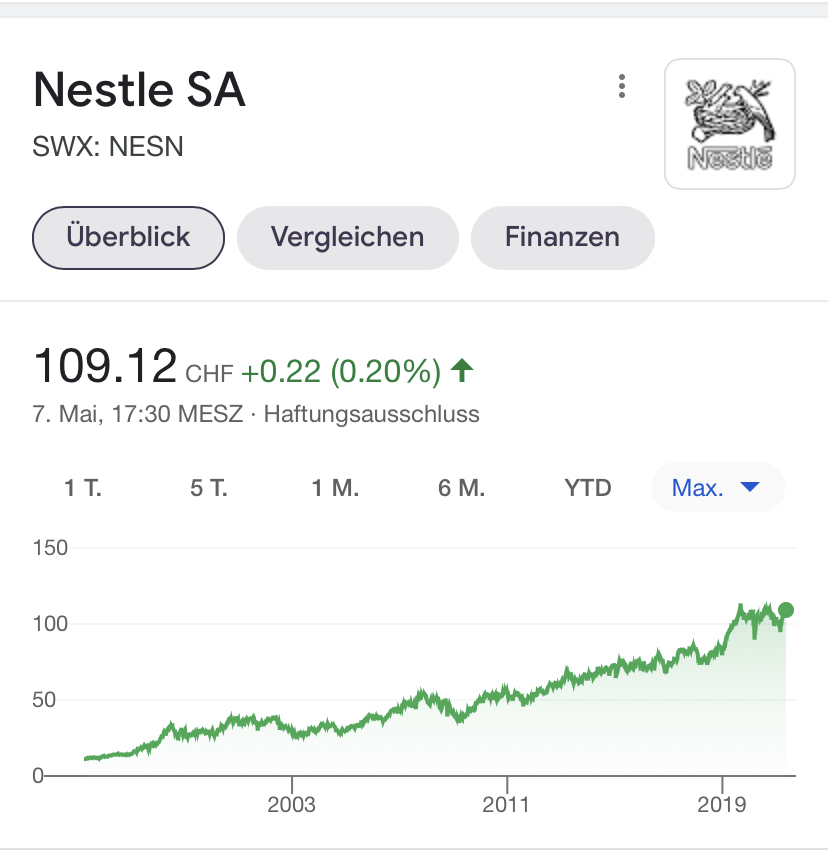
Nestlé has made generations a fortune. There is so much to like about the world largest food maker and number two in the global beverage market. What few people know, that Nestlé owns almost one third of French cosmetic giant L’Oreal which makes Nestlé even more compelling. L’Oreal has incredible strong brands in its product portfolio and a very capital light busiiness model. Almost one third of L’Oreal’s dividend payouts go to Nestlé (the business has been hiking its distributions for decades).
Now let’s turn to another stock holding in the consumer goods sector, to Dutch beer giant Heineken.
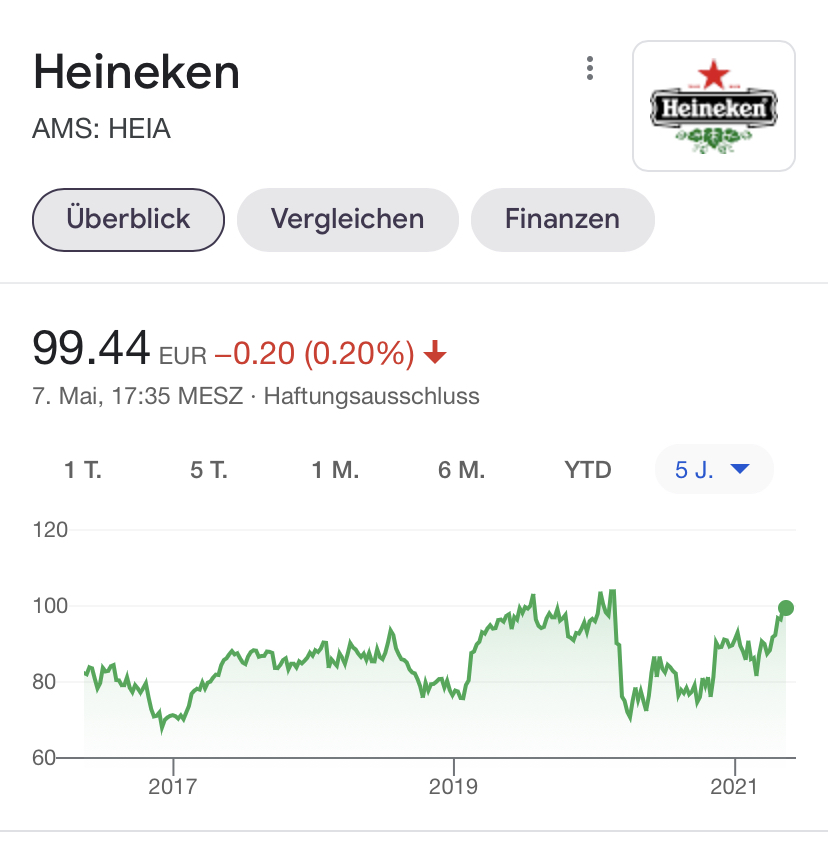
From the very beginning when we entered into our position in 2017, Heineken has been a refreshing investment and we enjoyed receiving growing dividends year by year. Well, the globald lockdowns was a huge blow to Heineken’s business model. With restaurants and bars closed, revenues slumped drastically. Heineken even had to cancel its dividend in 2020. Heineken’s stock price plummeted by almost 40 % in March 2020 and as you can see in the chart, Heineken’s recovery has been a bit rocky, less smoothly than in the case of Nestlé and PepsiCo.
But still, after one year, Heineken’s stock price stands where it was before, and investors that have taken advantage of lower stock prices got pieces of a wonderful business with Heineken stocks.
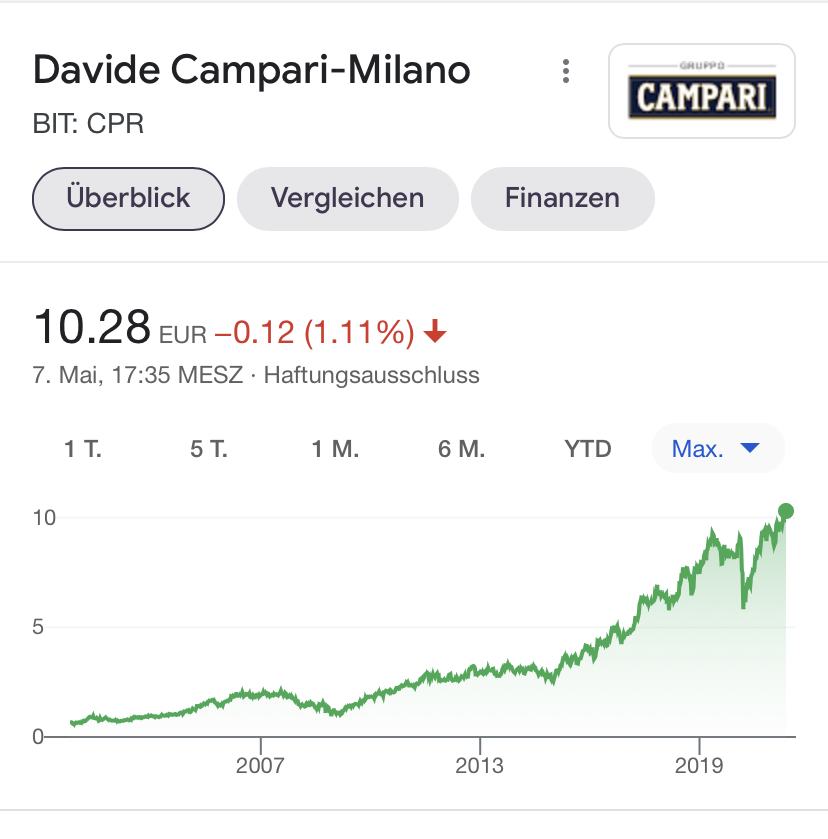
In March 2020, I thought some time of increasing our holding in beer giant Heineken but chose to diversify and add some more consumer staple companies such as British tonic maker Fevertree, French nutrition company Danone and Italien spirit maker Campari to our portfolio.
The investment in Campari has been particularily a successful one. Campari is a high quality business, boasting more than 50 brands, the best-known of which include Campari itself, Cinzano, Appleton Estate rum and Skyy Vodka. And my favorite: Aperol!
Now let’s turn to our Insurance Investments.
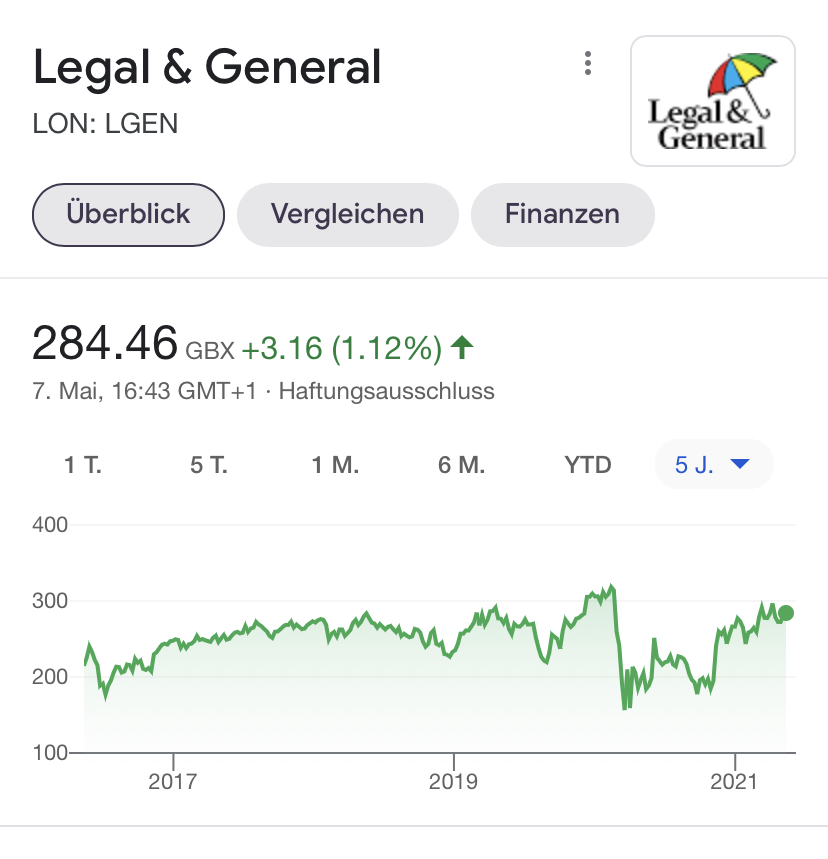
Legal & General is by far our largest exposure to the insurance sector, our stocks of that company have a market value of more than USD 15’000. Legal & General is a multinational financial services and asset management company, its products and services include lifetime mortgages, life assurances, pensions annuities etc.
Legal & General has an extremely capital light business model and is very resilient. But of course, it’s operations and stock price had been impacted by the COVID-19 pandemic.
Legal & General was able to maintain its giant dividend. My wife and I collect almost USD 1’000 per year as dividends from that company alone and reinvest it into more stocks of Legal & General. Our positon litterally ballooned. The stock price might be at the same level than one year ago, but our position increased. That’s the beauty of lower stock prices, you can buy more pieces of wonderful businesses on the cheap.
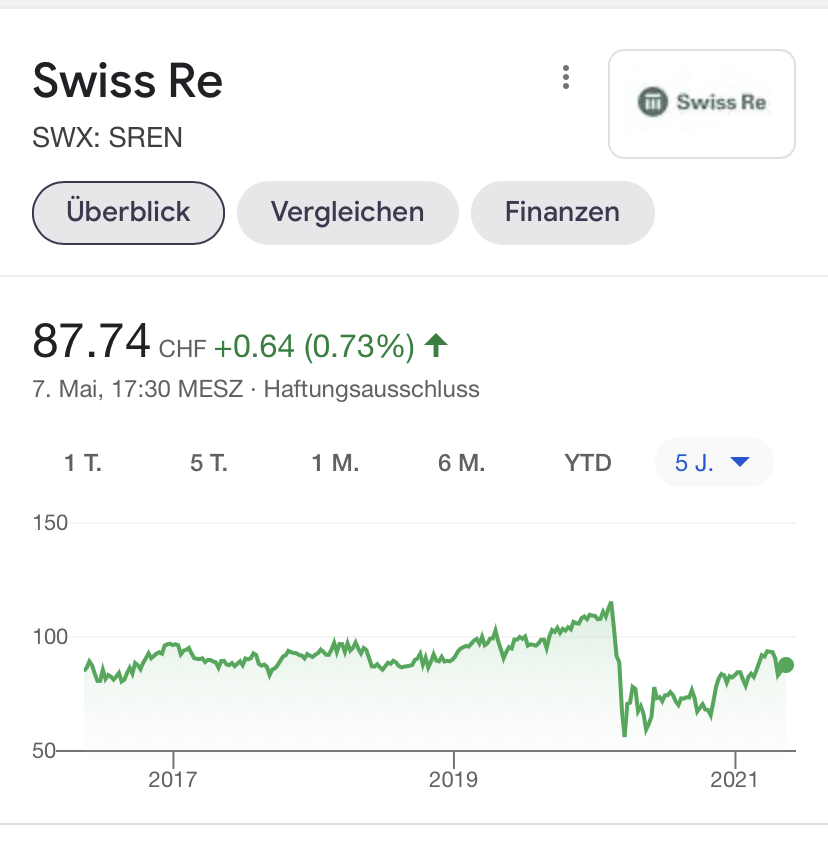
Swiss Re has been in our investment portfolio for years and we enjoyed the huge dividends which are usually hiked by the company. Swiss Re is a very robust business, sitting on massive cash and being extremely shareholder friendly. But with many events around the world had been to be cancelled due to the COVID-19 pandemic, insurances – and reinsurer as their back-up – had to pay billions. I was a bit surprised to see Swiss Re’s stock price litterally being cut in half in March 2020, crashing from well over CHF 100 to just above CHF 50.
Well, when shares of solid businesses get cheaper while the long term fundamentals remain intact, well that’s where we get interested. I pulled the trigger and increased our Swiss Re position at a very nice price. Swiss Re held its dividend payout stable and our total yield on costs for that investment is almost 8 %.
Now let’s turn to the commodity businesses.
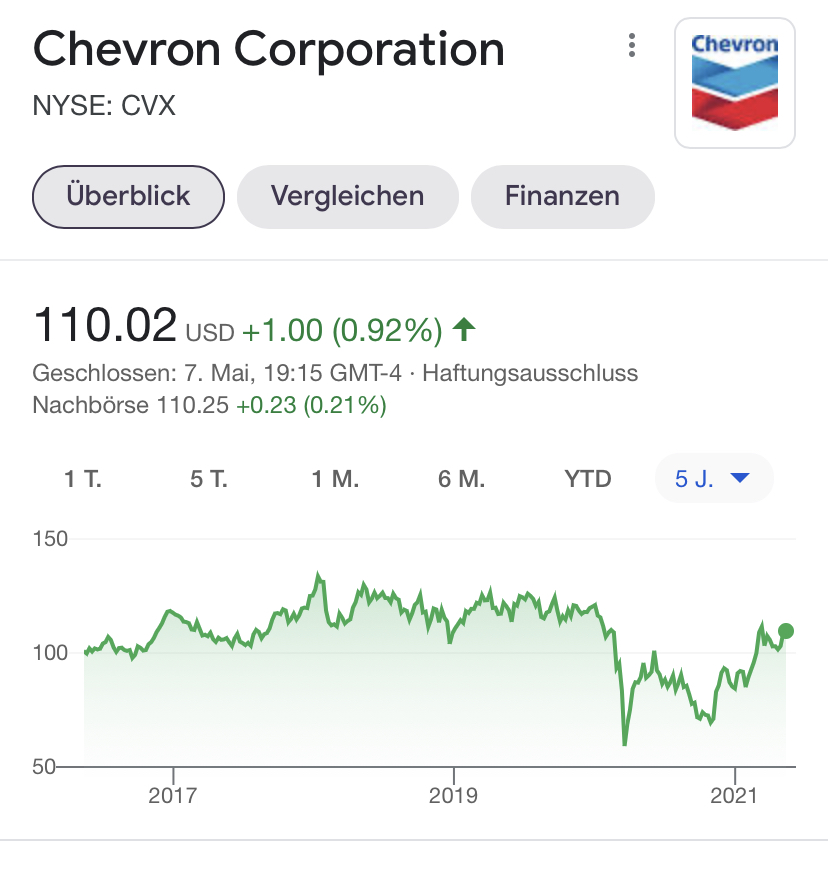
Oil and gas supermajor Chevron was hit quite hard in 2020 due to lockdowns all around the world. The stock price crashed by roughly 50 %, jumped then back quite a bit to test again the March 2020 lows and was then steadily going up to pre-pandemic levels. Chevron clearly showed its resiliency. Not only did that great business maintian its dividend but also kept increasing shareholder payouts.
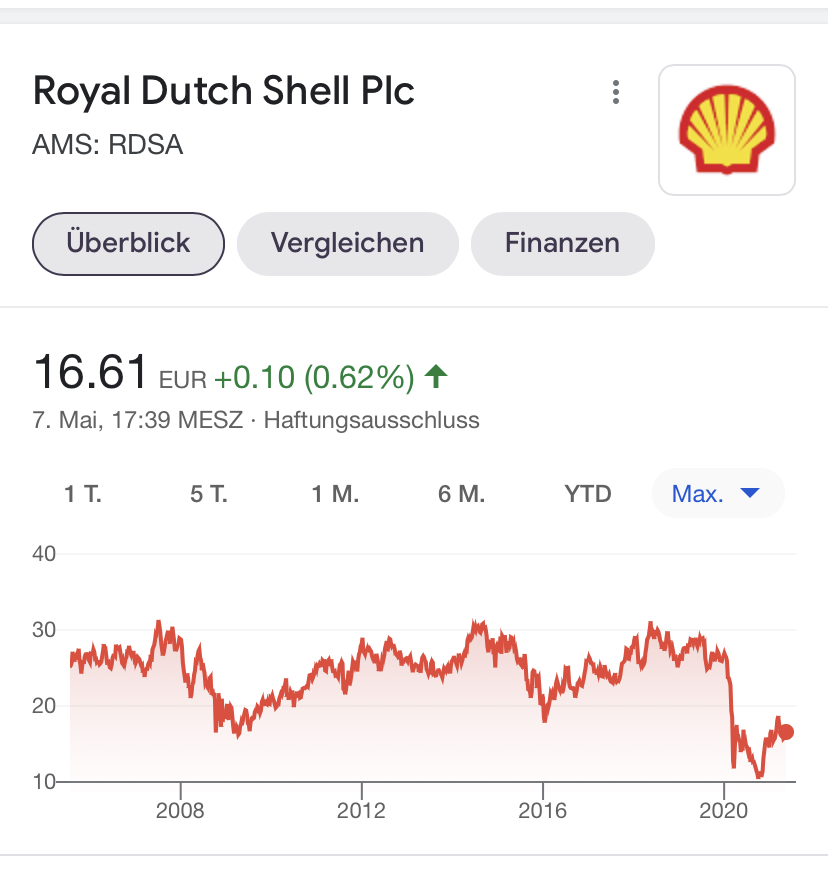
While Chevron went pretty unharmed through the COVID-19 pandemic, its larger competitor oil and gas giant Royal Dutch Shell experienced significant losses for several quarters. The stock price reflects the damage to the financial fundamentals of the company. Royal Dutch Shell cut its dividend by over 60 % to protect its balance shee and to preserve cash.
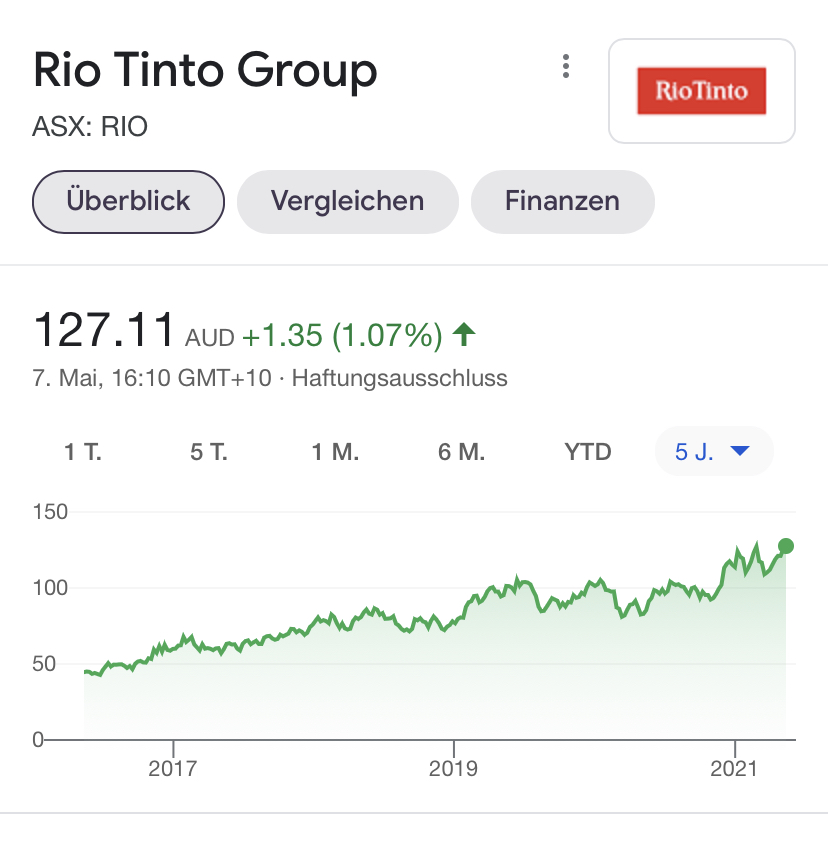
Anglo-Australian miner Rio Tinto came pretty well through the COVID-19 crisis. It’s a business that has perfectly adapted to volatile price dynamics. Iron ore prices briefly plummeted but recovered immediately which helped Rio Tinto to generate significant cash flows which the company generously distributed to its shareholders.
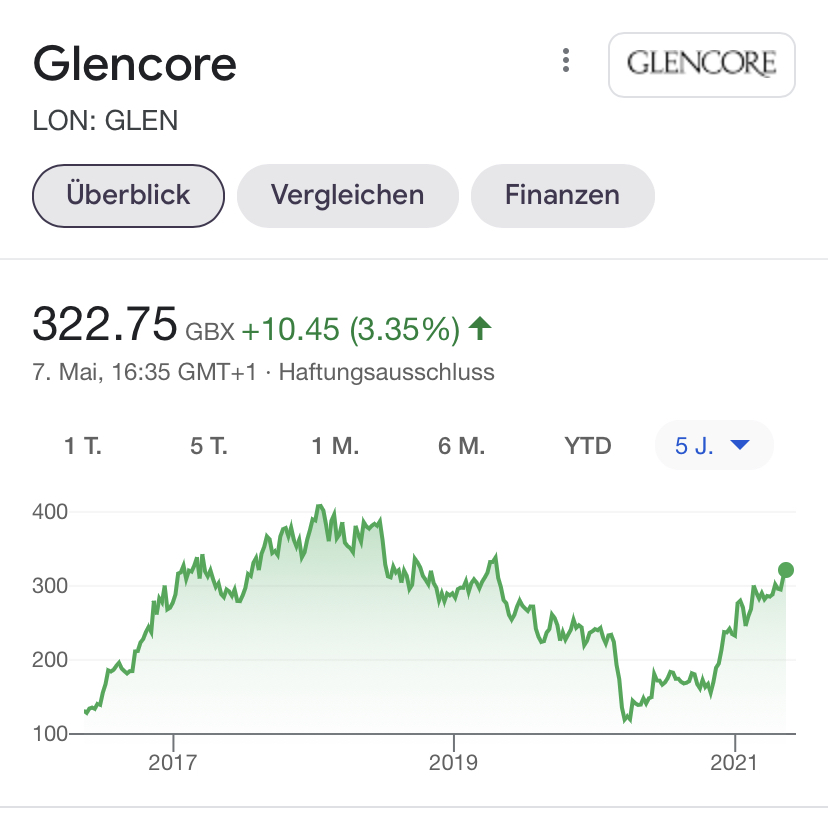
Mining and commodity trading company Glencore had a rough time for a couple of years as is reflected in its stock price. Bad business practice, litigations, scrutinity of governments etc. have been a drag on the company’s share price for quite a while, which was severely accentuated during the COVID-19 pandemic. Glencore does not have yet have an optimized cost structure like Rio Tinto and Glencore clearly does not only have tier-1 assets. Glencore lacks not only the high operation quality but also the prudent management Rio Tinto has shown for several years. So, it didn’t come as a surprise to me when Glencore cut its dividend for 2020. But still, cash flow generation has significantly improved since mid 2020 and Glencore resumed its dividend payouts which gave the stock price a nice boost, clearly above the pre-pandemic levels.
Our Buy and Hold strategy has been tested, and has been successful
My wife and I have been long term oriented Dividend Growth Investors since 2009. We embrace market volatility as it give us the opportunity to strengthen our stock portfolios even further. We want to establish more and more Passive Income Sources and fortify the backbone of our wealth creation process.
The COVID-19 pandemic was a huge shock for the whole world. And a strong blow to our stock portfolios, that temporarily “lost” almost USD 100’000. But we sat thight, focused on acquiring more positions and seeing our book losses shrink steadily until they turned into very nice book gains.
That’s the beauty of Buy and Hold Investing. After high quality stocks are acquired, you do nothing. And you will be rewarded for doing nothing.
Disclaimer
You are responsible for your own investment and financial decisions. This article is not, and should not be regarded as investment advice or as a recommendation regarding any particular security or course of action.
Nice portfolio. It’s a great collection of the best companies what you have accumulated and it’s very well diversified. Personally, I prefer PesiCo over KO because they have proven to be better capital allocators. On the other hand, KO’s expansion into the coffee business might prove otherwise. Time will tell and meanwhile their higher dividend creates a better income stream 😊
Thank you for stopping by and commenting.
I fully agree with you with regard to PepsiCo, its the more diversified and more robust company compared to Coca Cola. PepsiCo has indeed proven over and over again that they have a very good acquisition strategy and that they are very good at integrating businesses into their group. They are very good at allocating capital. Coca Cola has many balls in the air, the COVID-19 pandemic hit them before they have effectively finalised their refranchising project, which is global and rally huge. FCF should improve substantially and their recent acquisitions – amongst others into the coffee business – should indeed give some growth impulse.
Cheers
Congrats on such great results!
My investing experience is much shorter than yours, but also noticing the great effects of buying and hold good companies.
I am glad to see things are going well after the bad P2P experience we started within 2020. Long term investing cures the pain.
Cheers
Hi Tony
Thanks for swinging by.
Yes, long term oriented buy and hold approach really has paid off handsomely. Being patient is rewarding.
Absolutely, to some extent P2P experiences were bad (Kuetzal, Envestio, Grupeer), on the other hand there are still some good platforms. But overall, quite disappointing.
Cheers